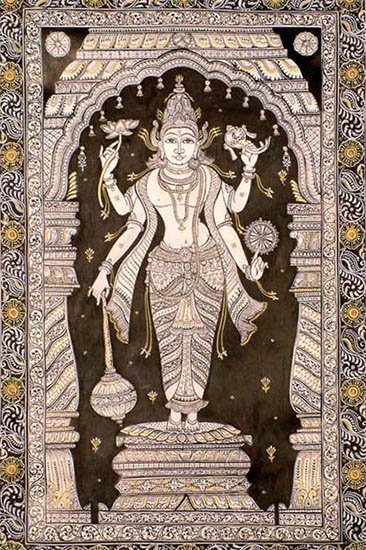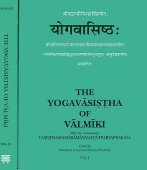Family priest: 1 definition
Introduction:
Family priest means something in Hinduism, Sanskrit. If you want to know the exact meaning, history, etymology or English translation of this term then check out the descriptions on this page. Add your comment or reference to a book if you want to contribute to this summary article.
In Hinduism
Shilpashastra (iconography)
Source: Shodhganga: Elements of Art and Architecture in the Trtiyakhanda of the Visnudharmottarapurana (shilpa)Family Priests are denoted in the Sanskrit langauge as Purohita and follows specific guidelines in the tradition of ancient Indian Painting (citra), according to the Viṣṇudharmottarapurāṇa, an ancient Sanskrit text which (being encyclopedic in nature) deals with a variety of cultural topics such as arts, architecture, music, grammar and astronomy.—The personalities like [e.g., Family priests], [...] are to be drawn to project them as noble and polite. Like cloths, accessories of different character also vary in their pictures. The ornaments of ministers, astrologers and family priests should not be very gaudy and they should have uṣṇīṣa i.e., turbans in their heads instead of crowns in their picture. Thus the Viṣṇudharmottarapurāṇa establishes the fact that even in the pictures; the people belonging to different class and profession [e.g., Family Priests—purohita] were projected with specific attire so that general people can equate the picture with the practical character.

Shilpashastra (शिल्पशास्त्र, śilpaśāstra) represents the ancient Indian science (shastra) of creative arts (shilpa) such as sculpture, iconography and painting. Closely related to Vastushastra (architecture), they often share the same literature.
See also (Relevant definitions)
Partial matches: Family, Priest.
Full-text (+83): Purohita, Kulacarya, Nepa, Kulavipra, Paurohitya, Atharvani, Kulaguru, Kulopadhyaya, Purodhas, Rikshara, Paurodhasa, Dhaumya, Atharvana, Dhayya, Dhaya, Kulapurohita, Purohityami, Purohit, Gharopadhya, Pureta-baje.
Relevant text
Search found 48 books and stories containing Family priest; (plurals include: Family priests). You can also click to the full overview containing English textual excerpts. Below are direct links for the most relevant articles:
The Bhagavata Purana (by G. V. Tagare)
Chapter 66 - Slaying of Pauṇḍraka and others < [Book 10 - Tenth Skandha]
Chapter 8 - Kṛṣṇa’s Sports—Display of Viśvarūpa < [Book 10 - Tenth Skandha]
Chapter 45 - Restoration of Preceptor Sāndīpani’s son < [Book 10 - Tenth Skandha]
The Jataka tales [English], Volume 1-6 (by Robert Chalmers)
Jataka 310: Sayha-jātaka < [Volume 3]
Jataka 422: Cetiya-jātaka < [Volume 3]
Jataka 34: Maccha-jātaka < [Book I - Ekanipāta]
Mahabharata (English) (by Kisari Mohan Ganguli)
Section CXXVII < [Tirtha-yatra Parva]
Section CXXVIII < [Tirtha-yatra Parva]
Section VI < [Ashvamedhika Parva]
Srila Gurudeva (The Supreme Treasure) (by Swami Bhaktivedanta Madhava Maharaja)
Preaching to the Son of His Family Guru < [Chapter 1.2 - Śrīla Gurudeva’s Pūrvāśrama]
Ramayana (by Manmatha Nath Dutt)
Chapter VIII < [Book 1 - Bāla-kāṇḍa]
Chapter LIX < [Book 1 - Bāla-kāṇḍa]
Chapter L < [Book 1 - Bāla-kāṇḍa]
The Markandeya Purana (by Frederick Eden Pargiter)
Related products
